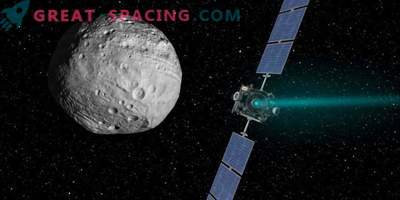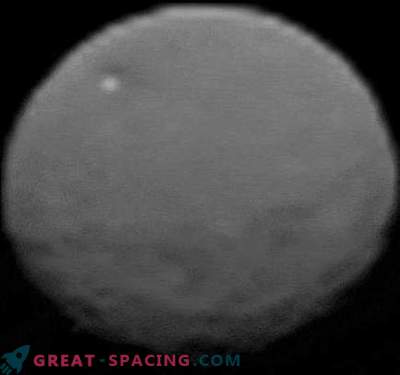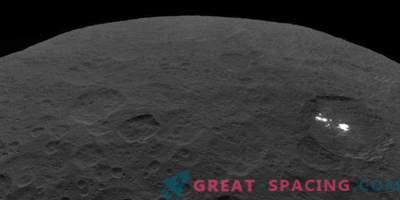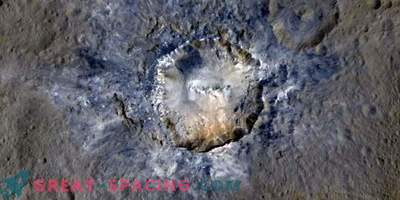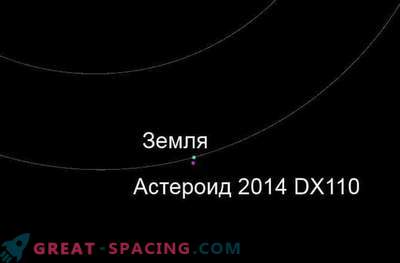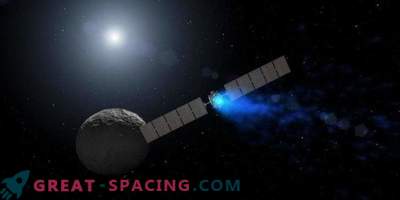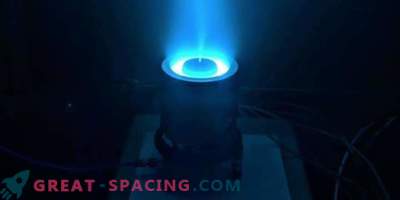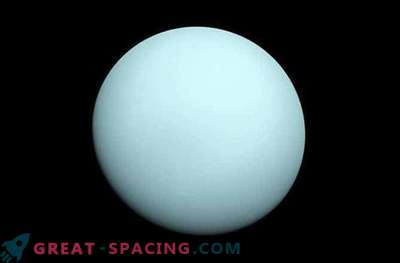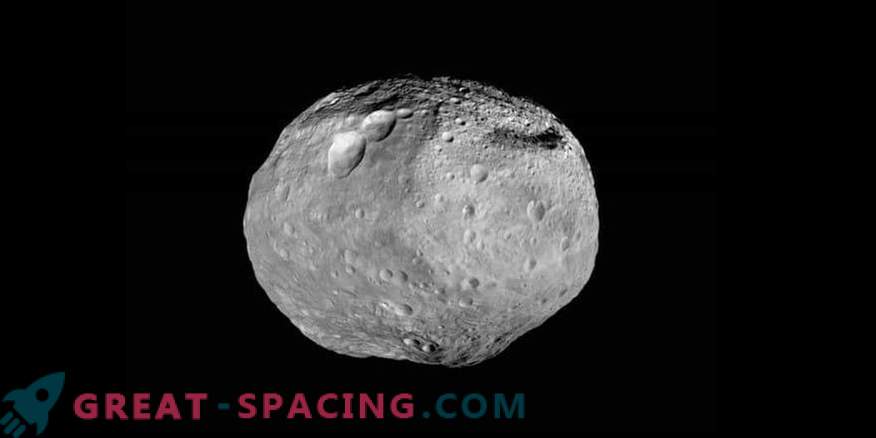
Due to the problems of classification and the acquisition of new data, the primacy of space objects is constantly changing. Today we will get acquainted with the largest asteroid of the Solar system, which not so long ago occupied only the third position.
Asteroid Vesta
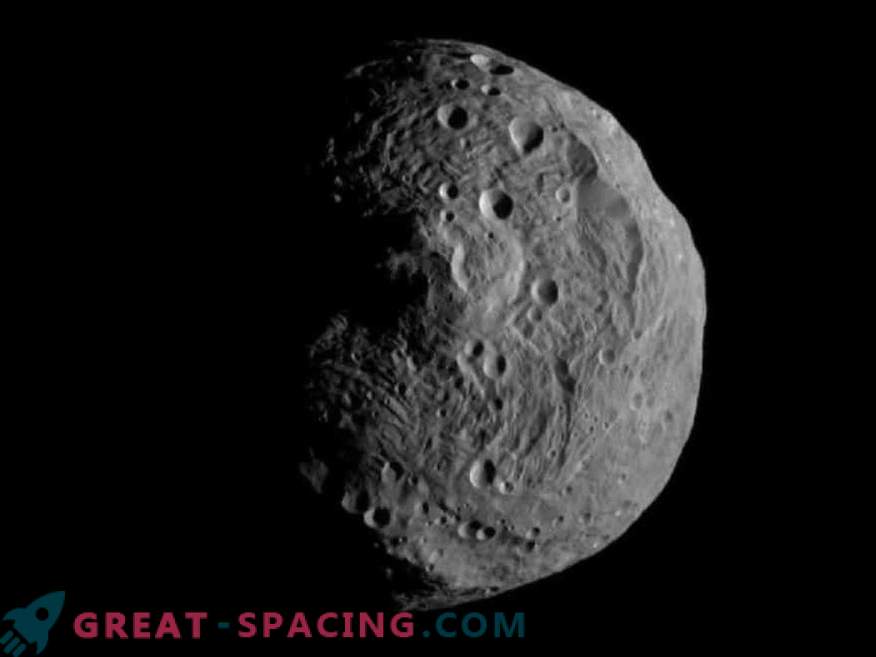
This image was obtained on July 17, 2011 by a framing camera on the Dawn machine at a distance of 15,000 km from the West protoplanets. Scaling - 1.4 km per pixel
This asteroid can be considered unique because it is the first in brightness among the asteroid family. Because of this, it is possible to observe literally without using magnifying devices. He was first noticed by an astronomer from Germany, Heinrich Olbers in 1807. The name got from Karl Gauss, who proposed to name in honor of the goddess of ancient Rome, responsible for home and home. Able to approach our planet at 177 million km.
With parameters of 576 km, Vesta could be classified as a dwarf planet. This is also hinted at by a similar geological filling (mantle of stone, as well as a core of iron and nickel). However, excessive asymmetry is seen in the form of the object, so that it was not possible to form a shape close to the sphere.
The object interested scientists, so in the 1990s. they wanted to launch an AGORA mission to him, but the project refused from ESA. This was followed by the Dawn probe in 2007, arriving at the heavenly body in 2011. It was an ideal period, because summer reigned on the territory of the southern hemisphere, and the large crater received full solar illumination. It was possible not only to obtain approximate images of the asteroid, but also to fix its rotation in the asteroid belt. The large impact crater near the south pole seemed interesting. It was called Reyasilviya, and the depth of the crater is able to reach 25 km.
Interesting Facts
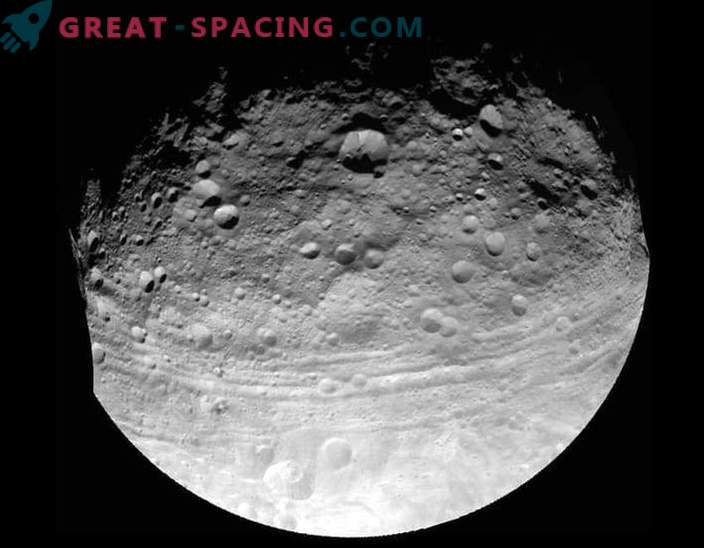
The giant asteroid Vesta is mapped by the Dawn machine. On the surface, a huge number of impact craters are noticeable.
- At the beginning of the 19th century, scientists were trying to find the missing planet, which according to calculations should live between Mars and Jupiter. During the search period, we managed to find several asteroids, where Vesta became the fourth.
- Because of the similarity with the planetary structure, it is believed that Vesta appeared almost immediately after the birth of our system, due to which radioactive materials melted the inner part. So we can say that it is not only an asteroid, but also a protoplanet.
- Reyasilvius crater extends over 500 km (almost like an asteroid's size), hinting at a powerful collision in the past.
- On the surface, you can find a crater group of three adjacent formations that are shaped like a snowman.
- Vesta has one of the widest brightness ranges among any rocky objects in the solar system.
- Only one spacecraft flew to the asteroid - Dawn.
The largest asteroid?
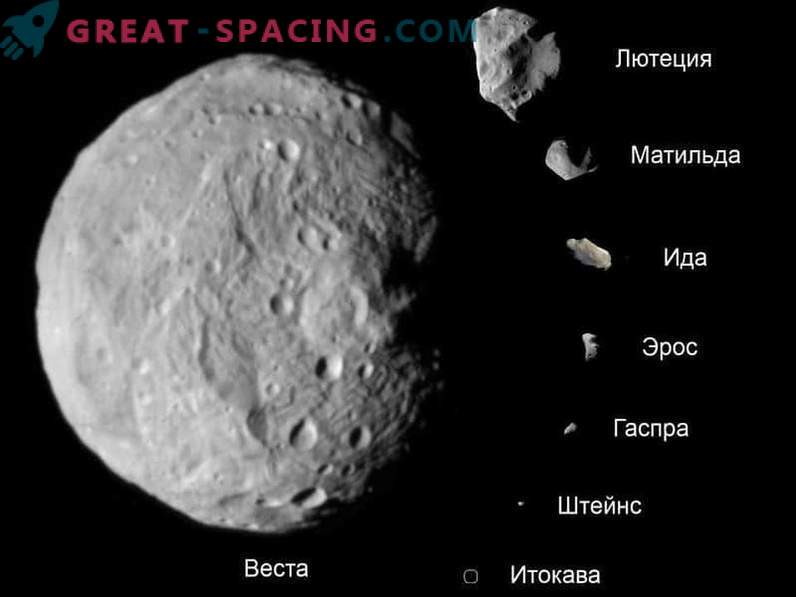
Comparison of the sizes of some asteroids of the main Belt Previously, Vesta was perceived as a third asteroid in size. Among the competitors were Ceres and Pallas. However, later the category of dwarf planets arose, where after long discussions Ceres was introduced (it became the smallest - “Ceres: the largest asteroid and the smallest dwarf planet”).
With the asteroid Pallas, everything was much simpler, because initially its size was determined incorrectly. Further observations showed that Vesta has a larger diameter, so a largest and brightest asteroid appeared in front of us.
Interestingly, the collision that gave rise to a large crater also created a family of fragments, some of which managed to reach the Earth. Scientists note that the impact was so strong that it almost destroyed the asteroid (you can see many fault lines around the equatorial line).
Postscript
So, we have the largest asteroid and possible protoplanet. Moreover, the researchers believe that it was Jupiter’s gravity that prevented Vesta and Ceres from becoming full-fledged planets.
